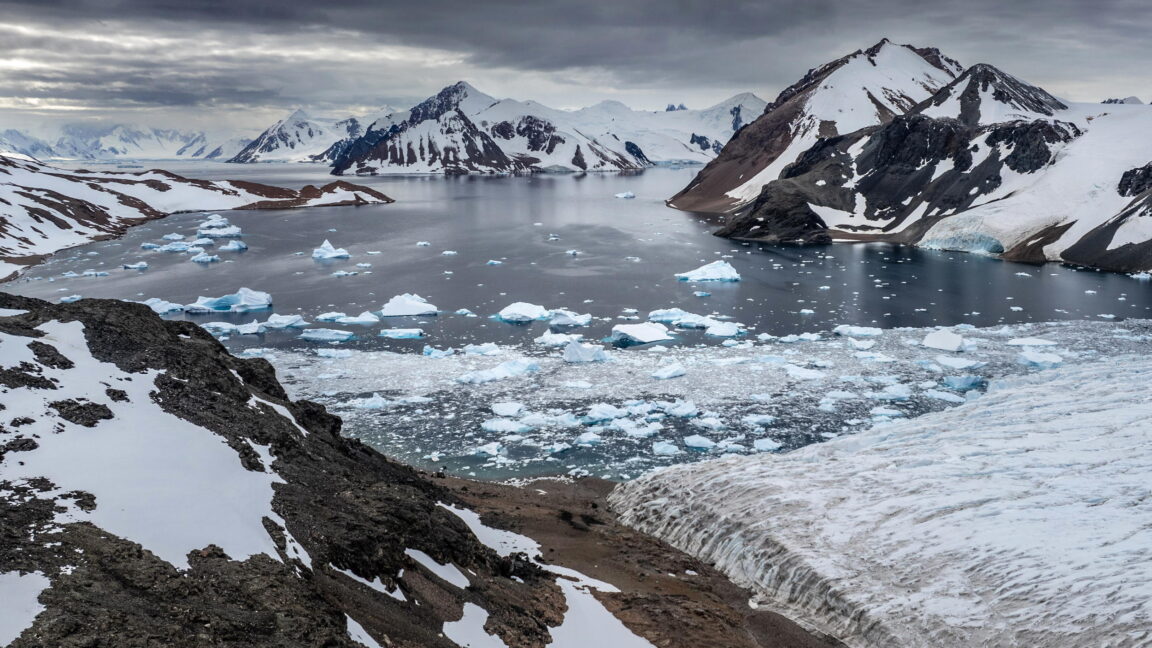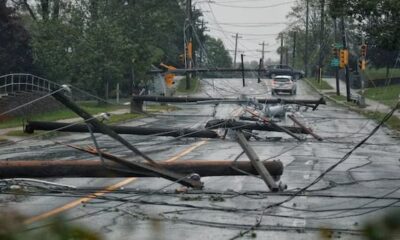Science
Antarctica’s Ice Melts at Alarming Rates, Echoing Greenland’s Fate

Recent research indicates that Antarctica is experiencing significant ice melt, comparable to the alarming conditions observed in Greenland. Once considered stable, Antarctica’s vast ice caps and glaciers are now showing signs of vulnerability to climate change. This shift has raised concerns among scientists about the potential consequences for global sea levels and climate patterns.
The Antarctic ice sheet spans approximately 5.4 million square miles, an area larger than Europe, and is, on average, more than 1 mile thick. It contains about 61 percent of the Earth’s fresh water, enough to increase global sea levels by about 190 feet if it were to melt entirely. The western portion of the ice sheet is particularly susceptible, with enough ice to elevate sea levels by over 10 feet.
In a recent paper published in Nature Geoscience, lead author Ruth Mottram, a researcher at the Danish Meteorological Institute, emphasized that the rapid changes now observed in Antarctica were previously thought to occur over much longer timescales. “We thought it would take ages for any climate impacts to be seen in Antarctica. And that’s really not true,” she stated.
The research highlights alarming trends such as increased surface melting, accelerated glacier movement, and reduced sea ice, all indicative of a warming climate. Satellite data and field observations confirm that Antarctica is not immune to the effects of global warming, similar to those affecting the Arctic regions.
A significant turning point occurred in 2002 when the Larsen B ice shelf collapsed along the Antarctic Peninsula. This incident shocked the scientific community due to its rapidity, occurring within weeks. Helen Amanda Fricker, a geophysics professor at the Scripps Institute of Oceanography, described the event as “staggering,” noting the unexpected speed at which the ice shelf disintegrated. The collapse led to the acceleration of seven major outlet glaciers into the ocean, contributing to rising sea levels.
The recent increase in ice loss from Antarctica has quadrupled since the 1990s. Fricker pointed out that the ice shelves are akin to dams holding back massive amounts of ice. “We are relying on those dams to hold back all that ice, but they are weakening all around Antarctica,” she warned.
Current research is focused on the edges of Antarctica, where floating sea ice and outlet glaciers interact with the ocean. The warming climate is penetrating deeper into the continent than previously believed. A heatwave in 2022 reached the coldest parts of the East Antarctic Ice Sheet, suggesting that the region is more interconnected with global climate systems than once thought.
Mottram noted that this heatwave was driven by an “atmospheric river”—a concentrated stream of moisture-laden air. She observed a concerning increase in the frequency and intensity of these atmospheric rivers, contributing to the accelerated melting of ice.
Some scientists, including Eric Rignot of the University of California, Irvine, emphasize the importance of understanding the interactions between oceans and ice in both Greenland and Antarctica. Rignot cautioned against oversimplifying the relationship, as each region has unique characteristics. Greenland is experiencing warming rates two to three times higher than the global average, which affects weather patterns in the Northern Hemisphere, whereas Antarctica’s warming is slightly less pronounced.
Mottram aims to raise awareness that Antarctica is not as remote and isolated as often portrayed. “What happens there will affect the rest of the global climate system,” she stated. She called for urgent action to reduce greenhouse gas emissions, asserting that the only way to mitigate these changes is to decarbonize as quickly as possible.
This research serves as a critical reminder of the urgency needed in addressing climate change. As Antarctic ice continues to melt at alarming rates, the implications for global sea levels and weather patterns could be profound, affecting millions worldwide.
-

 Politics4 weeks ago
Politics4 weeks agoSecwepemc First Nation Seeks Aboriginal Title Over Kamloops Area
-

 World5 months ago
World5 months agoScientists Unearth Ancient Antarctic Ice to Unlock Climate Secrets
-

 Entertainment5 months ago
Entertainment5 months agoTrump and McCormick to Announce $70 Billion Energy Investments
-

 Science5 months ago
Science5 months agoFour Astronauts Return to Earth After International Space Station Mission
-

 Lifestyle5 months ago
Lifestyle5 months agoTransLink Launches Food Truck Program to Boost Revenue in Vancouver
-

 Technology3 months ago
Technology3 months agoApple Notes Enhances Functionality with Markdown Support in macOS 26
-

 Lifestyle3 months ago
Lifestyle3 months agoManitoba’s Burger Champion Shines Again Amid Dining Innovations
-

 Top Stories2 months ago
Top Stories2 months agoUrgent Update: Fatal Crash on Highway 99 Claims Life of Pitt Meadows Man
-

 Politics4 months ago
Politics4 months agoUkrainian Tennis Star Elina Svitolina Faces Death Threats Online
-

 Sports5 months ago
Sports5 months agoSearch Underway for Missing Hunter Amid Hokkaido Bear Emergency
-

 Politics5 months ago
Politics5 months agoCarney Engages First Nations Leaders at Development Law Summit
-

 Technology5 months ago
Technology5 months agoFrosthaven Launches Early Access on July 31, 2025





















